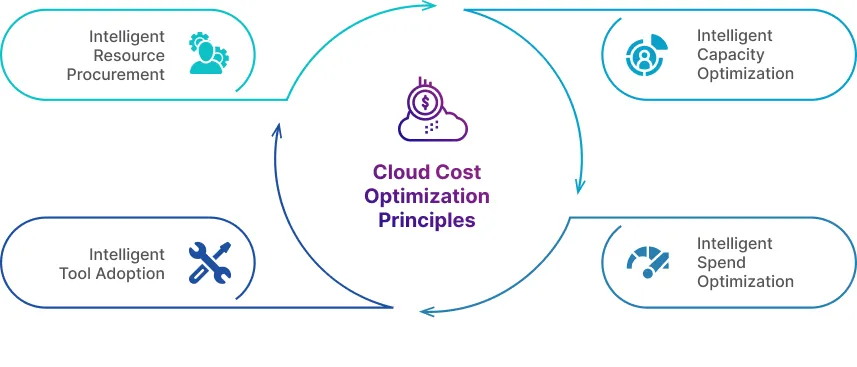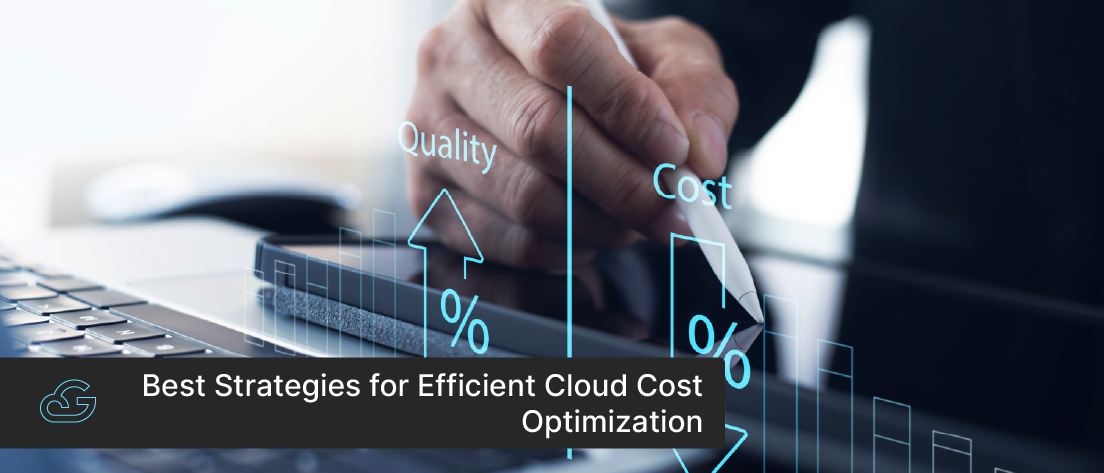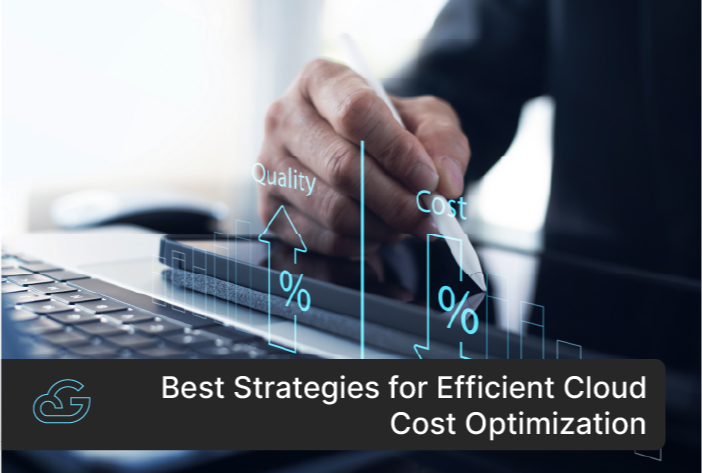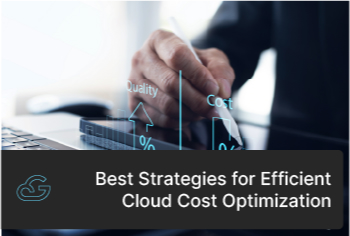Blogs / Cloud Optimization
Best Strategies for Efficient Cloud Cost Optimization
By
Sibin Vincent
Posted: June 16, 2021
• 4 Min Read
A common concern that organizations face in their cloud migration journey is how to manage their cloud spending effectively. Overprovisioned resources, mismanagement, and poor visibility are the primary causes of huge bills which can burn a hole in your pocket. It is therefore vital to analyze your cloud spending and resource utilization, identify mismanaged resources, and remediate flaws by adopting efficient practices and standards-driven processes.
A significant imbalance in the spending can lead to losses which may hamper all your efforts towards cloud migration. Expert guidance in adopting the right cost optimization strategies can help you towards a successful cloud transition. Gsoft helps you establish best practices and solutions in line with industry-standard cost optimization principles to control, manage and optimize your cloud cost while achieving the benefits of scalability, high availability, reliability, and agility.
Here are the strategies that Gsoft adhere in cloud optimization strategies that can help you make the most of your cloud investments.
Best Cloud Cost Optimization Strategies

- Intelligent Resource Procurement
- Intelligent Capacity Optimization
- Intelligent Spend Optimization
- Intelligent Tool/Technology Adoption
Identify, consolidate, and eliminate under-utilized/idle resources
Cloud providers charge for resources even if they are not utilized. You can reduce the cost incurred for such resources by consolidating and de-provisioning them once they are no longer needed. Although features like load balancers , elastic IP addresses, and block storage are hugely convenient can also be quite costly, and there is a tendency for a “fire and forget” mentality for these premium services. You can also save on software license costs by carefully analyzing and removing software that is no longer in use.
Right-size cloud resources
Right-sizing allows you to analyze computing resources and downsize them to the right fit making them run efficiently. Right-sizing servers for database, memory, graphics, storage, and CPU achieves both cost optimization and better performance from existing resources.
Multi-Cloud vs. Single Cloud
Carefully consider whether your requirements warrant a multi-cloud environment. Multi-cloud deployments are expensive as shifting between multiple cloud platforms involves extra training, payments for network traffic between clouds, and administrative hassles. On the other hand, sticking to a single cloud provider can help you avail significant discounts from huge-volume purchases.
Reserved instances Vs On-demand instances
Choose a pricing model wisely based on your resource usage, storage, and computing needs. It makes sense to reserve instances if you expect prolonged usage. Leading providers offer reserved options such as Amazon EC2 Reserved Instances, Google Cloud Committed Use program, and Azure Reserved VM Instances providing up to 75% discounts for bigger commitments resulting in significant savings.
Proper Storage Options
The most widely used cloud storage option Amazon S3 offers different storage tiers within different price brackets. Choosing the right tier that matches your needs can help you achieve better utilization at lower costs. It also helps you reduce wastage and prevents you from spending on unwanted features. Also, leveraging options such as Amazon S3 Intelligent tiering helps you automatically optimize storage and costs by dynamically adjusting the storage based on access patterns.
Set Budgets
You can optimize cost by closely aligning your compute strategy with your budget before deploying your cloud assets. It is important to plan your budget based on past consumption trends and aligned with organizational goals. Communicate the cost requirements for each project with the team to ensure that all members are aware of the common budget. Utilize the expertise of your FinOps team to execute continuous rightsizing of the budget to align with the changing project needs.
Employ Resource Tagging
Identify the areas where the cost is incurred most by tagging resources on the cloud. Tag resources by department, resources, project name, or username. The cloud providers periodically generate detailed reports of untagged resources. Analyzing these reports helps you understand the source of spend and channel them in a productive way. You can adopt measures such as using a configuration management database to track tagged cloud resources, and metadata to prioritize resources and optimize cost.
Review billing Information and Pricing plans
A detailed analysis of billing information gives you a broader picture of your cloud spend. You can leverage this information to distinguish and prioritize high-cost areas and workflows. This enables you to make informed spending decisions and avoid paying for redundant resources. Also, analyze the pricing plans offered by your provider ahead of time and select the best plan that offers the maximum ROI for your business needs.
Automated spend optimization
Automation takes you a step closer to efficient cost optimization by automatically scaling down resources based on utilization. AWS Auto Scaling is a good example of this. It automatically adjusts resource capacity to sustain a stable, predictable performance at the lowest possible cost. Similarly, AWS also provides toolsets to terminate unused EC2 instances automatically based on predefined criteria.
Heat Maps
Using visual tools such as Heat Maps allows you to identify the peaks and valleys of resource demands and schedule instances to start and stop automatically. Such tools give more clarity to enterprises on the usage patterns and understand costs better.
Cost Anomaly Detection
The AWS Cost Management console offers an Anomaly Detection feature that allows you to continuously monitor and manage your cloud cost and usage. It leverages advanced machine learning technologies to identify spend anomalies, root causes, and implement quick action. You can set up contextualized monitoring and alert preferences to get notified when any anomalous spend is detected. This helps you to prevent cost surprises and stick with your planned budget.
Gsoft adheres to a unique cloud cost optimization approach that enables organizations to monitor, manage, and right-size cloud expenses across organizational units, cloud accounts, and applications. Learn from our cloud computing experts how we can deliver business-specific solutions that let you get maximum bang for the buck for your cloud investments.


Get Know More About Our Services and Products
Reach to us if you have any queries on any of our products or Services.











